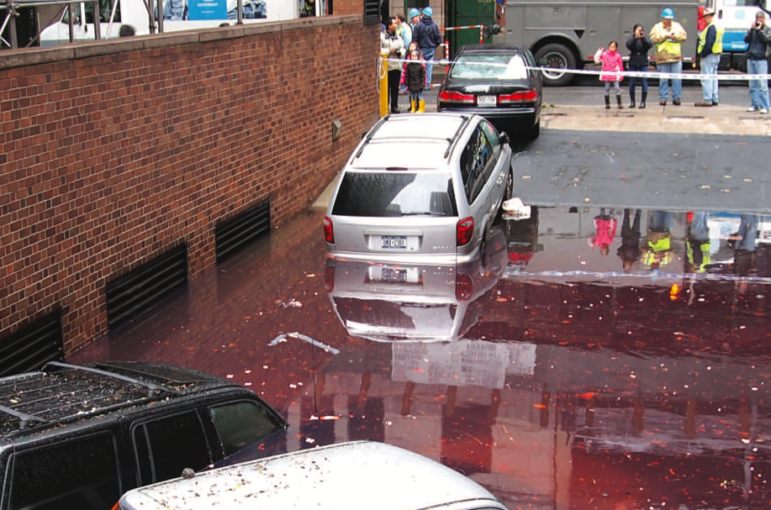
NYC ORR
Flooding in Lower Manhattan after Hurricane Sandy. In New York City alone, 400,000 residents and nearly 250,000 buildings are in the current floodplain.In December, Governor Andrew Cuomo issued disaster declarations for 12 upstate counties due to heavy rain, high winds and flooding that left hundreds of thousands without power. In the summer, flash floods in Broome and Seneca counties damaged homes and properties. Heavy rain led to the closure of I-190 in Buffalo and crucial intersections in Staten Island.
Risk is not limited to headline-grabbing news: every day in New York State, there is a 23 percent chance of flooding, while 90 percent of residents live in vulnerable waterfront communities. In New York City alone, 400,000 residents and nearly 250,000 buildings are in the current floodplain.
Rather than waiting for the next disaster to happen, we must shift our focus from conducting emergency repairs to proactively building resilient infrastructure. To ensure our communities are capable of adapting to disruptive events, there must be reliable access to critical resources and services like transportation facilities, water supplies, energy systems and waste management.
I applaud the Governor’s commitment to making New York an environmental leader and to protecting our residents and businesses through the $3 billion “Restore Mother Nature Bond Act.” The Bond Act will help build resilient infrastructure and address the growing risk of flooding throughout the State – flooding which will only become worse because of climate change. With 90 percent of smaller businesses failing within a year unless they can resume operations five days or less after a crisis, the risk of flooding is not only a safety issue, but a dire economic problem.
The truth is that investment in resilient infrastructure saves money. Building back from a disaster costs more and is often performed without considering long-term needs. The National Institute for Building Sciences has found that every dollar spent on infrastructure has a return of six dollars. The path forward needs to be a thoughtful, statewide effort.
It starts with a comprehensive resiliency plan; one which reduces the risk of flood inundation, builds in a way that acknowledges that we will have to live with increased flooding and incentivizes resilience measures that will create good paying jobs and enhance our communities.
 CityViews are readers’ opinions, not those of City Limits. Add your voice today!
CityViews are readers’ opinions, not those of City Limits. Add your voice today!
A statewide effort should be multifaceted and begin with the passage of the Bond Act, which wouldprovide municipalities the financial security to collaborate with the state’s most vulnerable populations and invest in long-term, regional solutions. The Bond Act will also help reduce our carbon emissions and meet the targets set forth by the Climate Leadership and Community Protection Act.
In addition, the state should manage stormwater with both nature-based and structural solutions. A combination approach will offer a flexible framework depending on a specific site’s conditions. It may be more appropriate to focus on the preservation of natural drainage corridors near the Erie Canal, while it is more reasonable to construct large-scale floodwalls and surge barriers in New York City.
At the end of the day, our communities need proactive investment in resilient infrastructure, which will give us the opportunity to create green jobs and enhance the quality of life for New Yorkers. It will also encourage workforce development, increase property values, improve infrastructure assets and safeguard residents and businesses from disruptive events. This makes resilient infrastructure a win for New York State, our residents and our economy.
Carlo A. Scissura is the president & CEO of the New York Building Congress.








